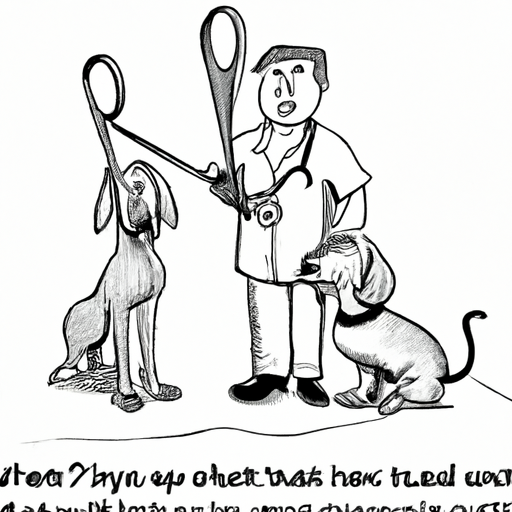Understanding the Practice
You may have seen dogs with short tails and wondered, “Why do they cut dogs’ tails off?” The practice, known as docking, has a long history and is often a topic of controversy. For you, a caregiver, the wellbeing of your furry friend is paramount. You might be curious about the reasons behind this procedure and what it means for a dog’s health and happiness. Let’s delve deeper.
The Historical Context
Docking has its roots in times when dogs were primarily working animals.
- Fighting and Hunting: In the past, dogs with long tails were at a disadvantage in fights or when hunting, as their tails could be grabbed or bitten. Docking was seen as a preventive measure.
- Tax Laws: In 18th century England, there was a tax on dogs unless they were working dogs. A docked tail became a sign that the dog was a worker, exempt from the tax.
However, times have changed, and the majority of dogs today are companion animals rather than workers. This raises the question, is tail docking still necessary?
The Health Perspective
From a medical standpoint, there are both pros and cons to tail docking.
Pros
- Prevents tail injuries: Some breeds are prone to injuries and infections due to their long, thin tails. Docking can prevent these issues.
Cons
- Potential for pain: While the procedure is usually performed on young puppies, it can still cause discomfort.
- Risk of complications: As with any surgical procedure, there can be complications such as infection or nerve damage.
In general, veterinary associations recommend against routine tail docking for cosmetic reasons.
The Ethical Debate
You, as a caregiver, likely empathize with the ethical concerns surrounding tail docking.
- It’s often performed without anesthesia, which can cause pain and distress.
- The tail is an important tool for communication between dogs. Without it, a dog might have trouble expressing itself.
- Many believe that the cosmetic appeal to humans shouldn’t outweigh a dog’s natural state and wellbeing.
Steps to Make an Informed Decision
As a caregiver, you want the best for your dog. If you’re considering a breed with traditionally docked tails, here’s what you can do:
- Research the breed: Some breeds may have legitimate health reasons for docking. Make sure you understand these before making a decision.
- Talk to a vet: They can provide guidance based on your specific dog’s health and needs.
- Consider the ethical implications: Remember, you’re making a decision that will impact your dog for its entire life.
Frequently Asked Questions
Q: Is tail docking painful for puppies?
A: Yes, it can cause discomfort and distress, even though puppies are very young when the procedure is typically performed.
Q: Can a dog still communicate without its tail?
A: While dogs use other body language as well, the tail is an important tool for communication. A docked tail may limit their ability to express themselves.
Q: Is tail docking legal everywhere?
A: No, it’s banned in many countries and in some US states. It’s always important to check local laws and regulations.
Q: Are there alternatives to tail docking?
A: Yes, many people opt to leave their dogs’ tails natural. Some breeds can also have their tails “tipped”, which involves removing a small portion of the tail rather than the majority.



